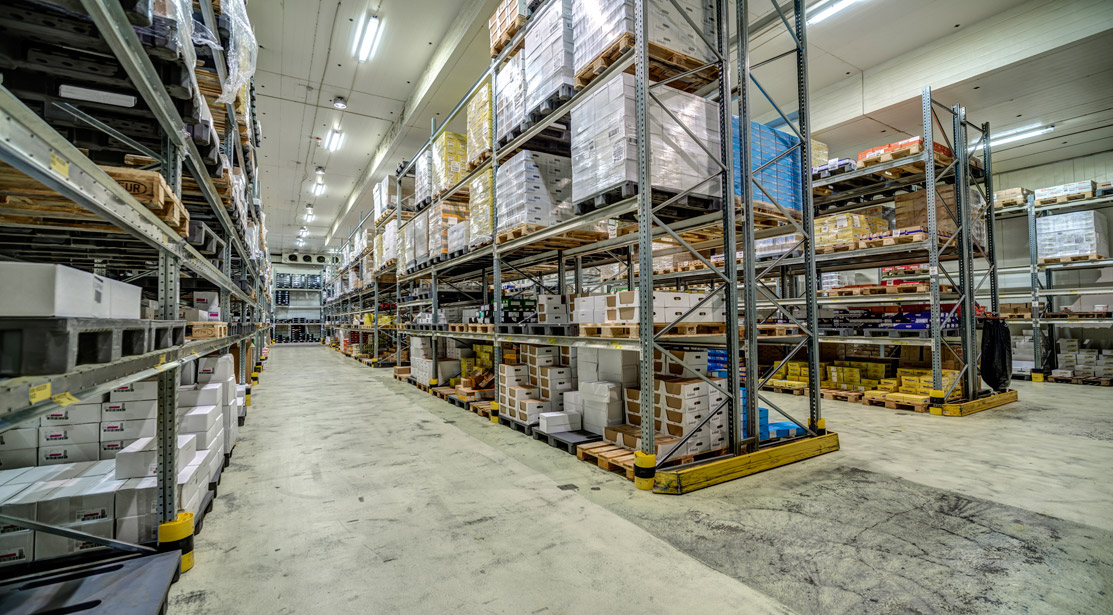Fortunately, LED lighting thrives in cold rooms. It consumes less energy and has longer lifetimes without the need to replace any light sources, as LEDs lose less light over time. They also produce less heat, and the low ambient temperatures increase LED light source and operating gear lifetimes significantly. With LEDs, lighting quality is no longer compromised, it is enhanced.

Standard illuminance requirements in cold storage warehouses are low, but more light makes labels and storage documents easier to read. Industrial lighting in damp areas needs a high IP rating and should be maintenance-friendly.
Lighting requirements in EN 12464-1
General areas inside buildings – Storage rooms, cold stores
| Type of task / activity area |
Lux-level (Em) |
Glare rating (UGRL) |
Uniformity (U0) |
Colour rendition (Ra) |
Em,z | Em,wall | Em,ceiling | Specific requirements |
|
| required | modified | U0 ≥ 0,10 | |||||||
| Store and stockrooms | 100 | 150 | 25 | 0,40 | 80 | 50 | 50 | 30 | 200 lx if continuously occupied |
| Dispatch packing handling areas | 300 | 500 | 25 | 0,60 | 80 | 100 | 50 | 30 | |
| Larder | 200 | 300 | 25 | 0,40 | 80 | - | - | - | Sufficient vertical illuminances shall be applied to shelving |